 |
 |
 |
| |
Transmission of HIV-1 Exhibiting Resistance to Protease, Reverse Transcriptase and Integrase Inhibitors in a Previously Documented HIV-1 Negative Patient
|
| |
| |
Reported by Jules Levin
19th IAC 2012 Wash DC July 22-27
Charles Walworth1*, Douglas Ward2, Laura Napolitano1, Pham Phung1, Chris Petropoulos1, Joseph M Volpe1
1 Monogram Biosciences, Inc., South San Francisco, CA, USA
2 Dupont Circle Physicians Group, Washington D.C., USA
CONCLUSIONS
· This case study may represent the first confirmed report of the transmission of HIV-1 exhibiting resistance to five antiretroviral drug classes.
· To our knowledge, this case represents the third confirmed report of transmitted integrase inhibitor resistant HIV-1.
· Analysis of this case study has led to the identification of two novel substitutions at resistance associated positions in gp41 that were found to confer high level phenotypic enfuvirtide resistance.
· The value of baseline resistance testing to determine the optimal antiretroviral treatment regimen is highlighted here.
·The clinical utility of tropism testing to assess maraviroc use, and the emerging importance of assessing integrase inhibitor resistance at baseline is also demonstrated.
RESULTS
· Genotypic resistance analysis of the baseline virus (Figure1) demonstrated mutations associated with resistance to PIs (L10Y, K20I, E35D, M36I, K43T, I62I/V, V82K), NRTIs (M41L, D67N, L74V, L118I), and NNRTIs (K101E, Y181C, V189I, G190S). Repeat genotypic resistance analysis from a separate sample confirmed the initial findings as well as mutations associated with resistance to IN (G140S, Q148H) (Table 2).
· Co-receptor tropism testing identified a predominantly R5 virus population with a significant component of dual-R variants in19 of 44 clones (not shown). See Table 3 for representative R5 and Dual R examples.
· ENV gp41 sequence analysis demonstrated novel substitutions (Q40R, N43S) at amino acid positions previously associated with enfuvirtide resistance (Figure 4).
· Reductions in susceptibility to PIs, NRTIs, NNRTIs, INIs and enfuvirtide were identified by phenotypic testing, with maximal reduction in susceptibility to efavirenz, nevirapine, raltegravir and enfuvirtide (Figure 2).


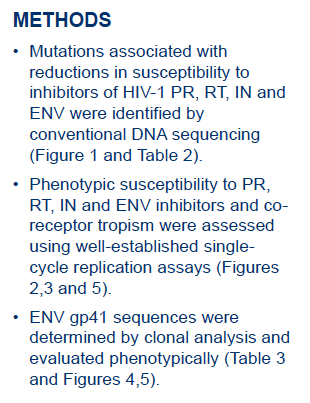
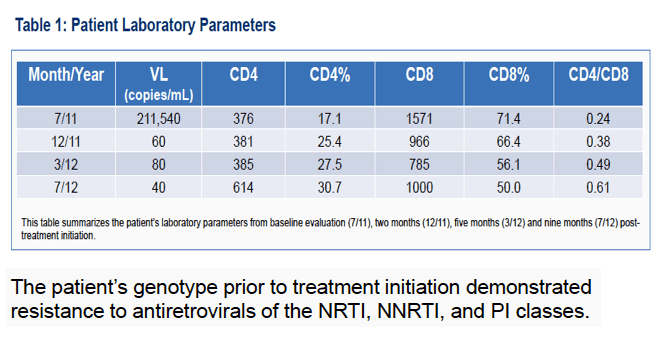
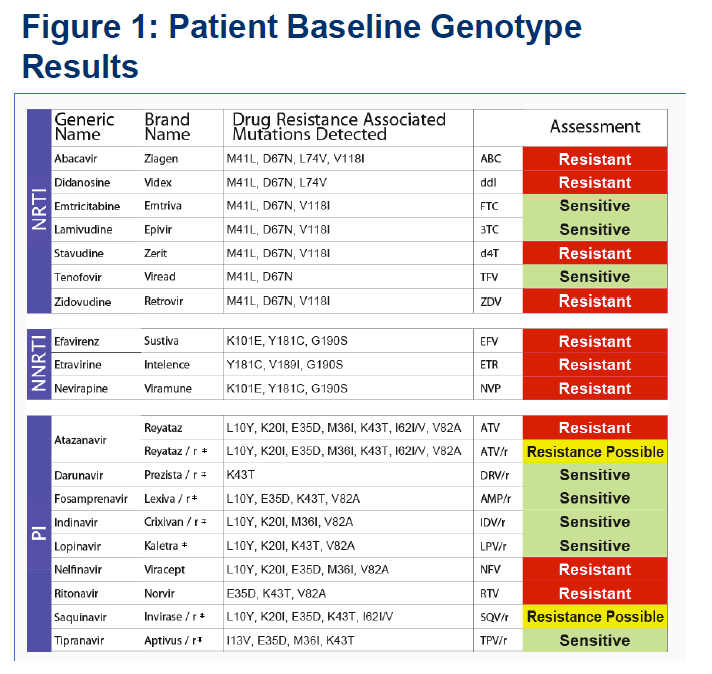
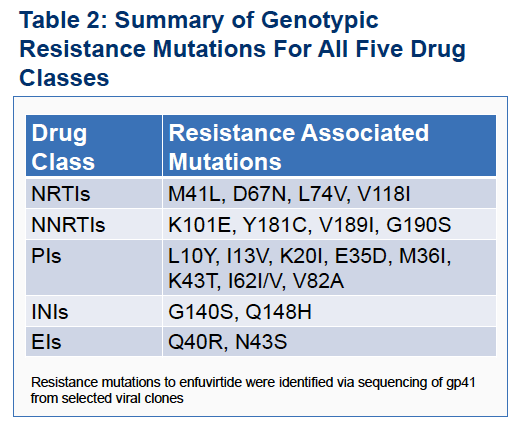
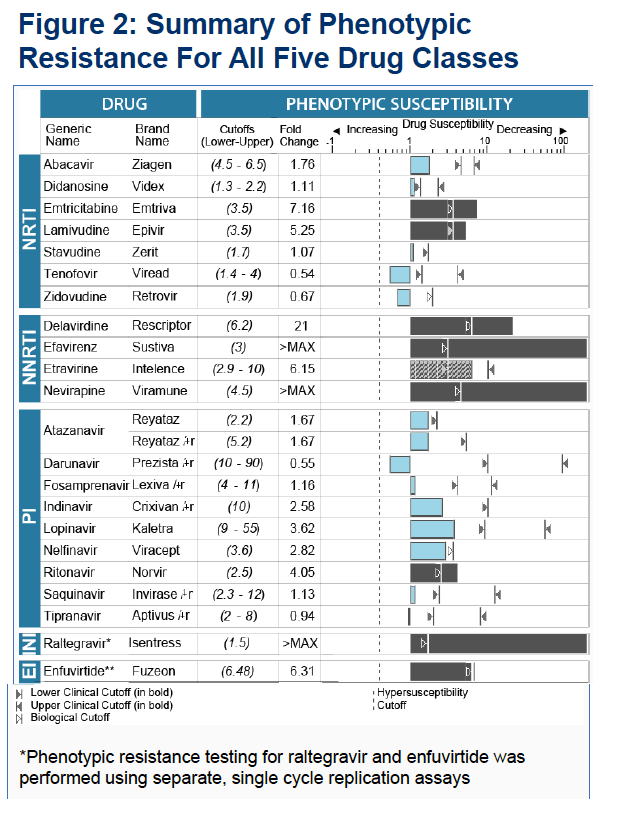
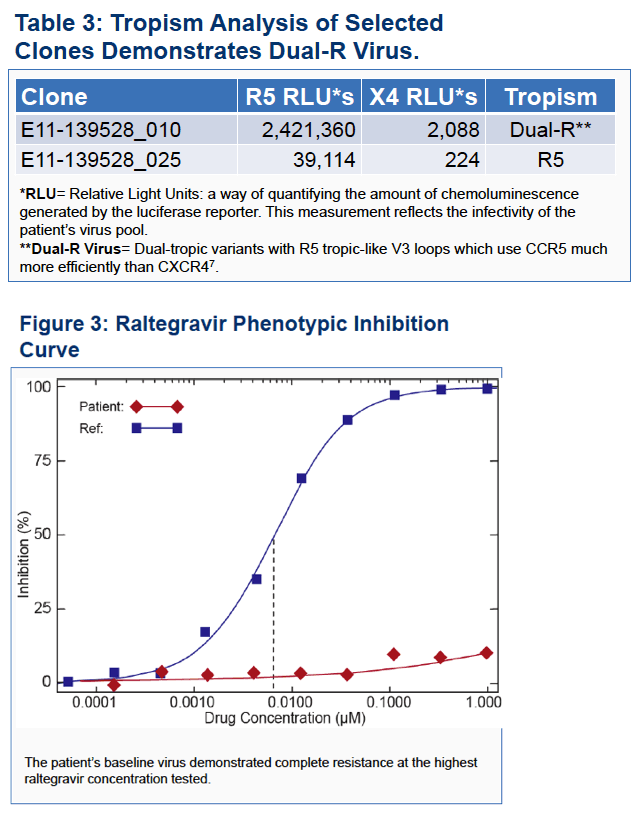
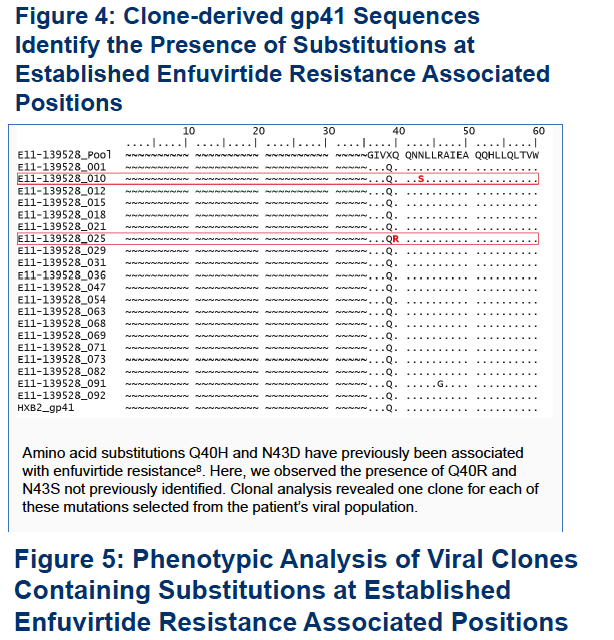
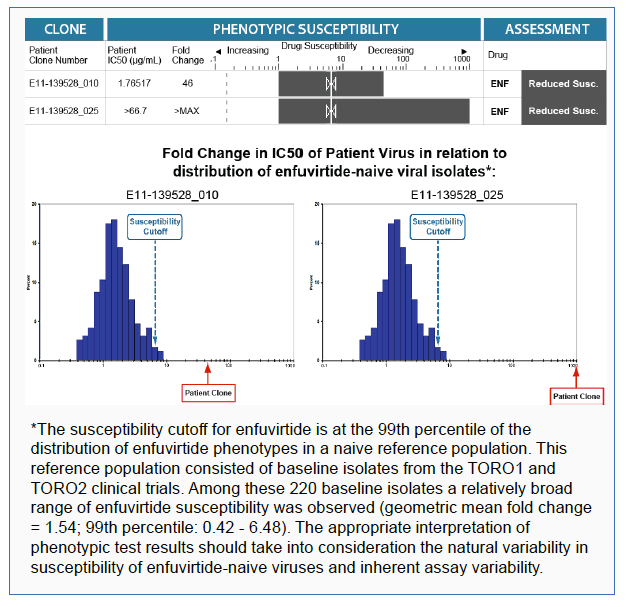
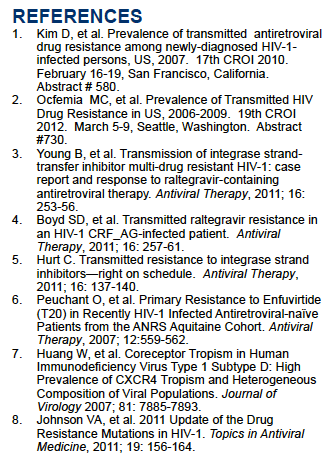
|
| |
|
 |
 |
|
|